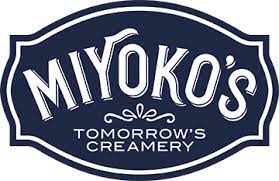Title Page
-
Site conducted
-
Conducted on
-
Prepared by
-
Audit Team:
-
Opening Meeting Completed
-
Who attended the meeting (name/position)
-
Facility Description: # of employees
-
Facility Description: size of facility
2.1 Management Commitment
-
2.1.1 Is the Food Safety Policy and Objectives documented?
-
2.1.1 Are the objectives assessed on a routine cadence?
-
2.1.2 Do key stakeholder's job descriptions capture Food Safety?
-
2.1.2 Does the site have a current Organizational Chart, and Back-ups for key positions?
-
2.1.2 Does the SQF Practitioner and back-up have HACCP training certificate?
-
2.1.2 Management Review: (Review documents: Management Review procedure and associated Management Review documents)
-
2.1.3 Complaint Managements: Review procedure(s); Does the site complete tracking and trending of complaints?
2.2 Document Control and Records
-
2.2.1 Food Safety Management System: Review Food Safety Manual
-
2.2.2 Document Control: Review Document Control procedure
-
2.2.3 Records: Review Records Management policy. Are Good Documentation Practices followed?
2.3 Specification, Formulations, Realization, and Supplier Approval
-
2.3.1 Product Formulation and Realization: Review Product Development procedure and associated records (i.e., review 3 random trials completed)
-
2.3.2 Specifications: Review Raw Material and Finished Goods register
-
2.3.2.7 Review Contract Service Provider register
-
2.3.3.2 (If Applicable) Does the site have a documented the food safety risk level of site? Review Contract Manufacturer policy.
-
2.3.4 Approved Supplier Program: Review procedure and annual supplier documentation.
2.4 Food Safety System
-
2.4.1 Food Legislation: Does the site have documented to notify the certification body within twenty-four (24) hours in the event of a regulatory warning and that notification to SQFI shall be by email to foodsafetycrisis@sqfi.com?
-
2.4.2 Review GMP policy. Does the site adhere to the GMPs documented?
-
2.4.3 Food Safety Plan: Review the HACCP plan. Does the HACCP team incorporate a multidisciplinary team that covers SQF practitioner, and other site personnel with technical, production, and engineering knowledge of relevant products and processes?
-
2.4.3.13 Has the HACCP team reviewed the HACCP plan in full within the past 12 months? (since the last 3rd party SQF audit)
-
2.4.4.2 Product Sampling, Inspection, and Analysis: Is test equipment calibrated by a 3rd party that is accredited to requirements of ISO/IEC 17025?
-
2.4.4.2 Product Sampling, Inspection, and Analysis: Is test equipment calibrated by a 3rd party within the last 12 months?
-
2.4.5.1 Non-conforming Materials and Product: Review non-conforming material procedure. Is documentation adequately controlled at a site level on rejected material?
-
2.4.6.1 Product Rework: Is reworked and recouped product clearly identified and traceable?
-
2.4.7 Product Release: How does the site have responsibilities and methods for releasing finished products documented?
-
2.4.8.1 Environmental Monitoring: Does the site have a risk assessment completed against known or expected concerns to identify if an environmental monitoring program is necessary?
-
2.4.8.3 Environmental Monitoring: does the site have a policy stating the sampling and testing schedule, number of samples to be taken and frequency of sampling?
2.5 SQF System Verification
-
2.5.1.1 SQF Validation Effectiveness: Does the site have processes to ensure SQF requirements are effective? Scope: GMPs, Critical Food Safety limits, and changes to processes affecting food safety. Review documentation of process.
-
2.5.2.1 Does the site process for verifying Good Manufacturing Practices, critical control points (if applicable) and other food safety controls?
-
2.5.3.1 Does the site have a Corrective and Preventive Action program? (review CAPA log for closures)
-
2.5.4.1 Does the site communicate internal audit findings to relevant management personnel staff?
2.6 Product Traceability and Crisis Management
-
2.6.1.1 Product Identification: Does the site have product start-up and changeover procedures to ensure that the correct product information is applied or labeled and the changeover is inspected and approved by an authorized person?
-
2.6.2.1 Product Trace: Does the site have traceability to raw material receipt and finished product dispatch and destination records?
-
2.6.3.1 Product Withdrawal and Recall: Does the site have a documented communication plan to inform customers, consumers, authorities, and other essential bodies in a timely manner?
-
2.6.3.2 Product Withdrawal and Recall: Has the site completed a Mock Recall/Trace Exercise within the past 12-months?
-
2.6.4.1 Crisis Management Planning: Does the site have a Crisis Management Plan that: has controls implemented that actions do not compromise product safety; and a documented contact list that includes supply chain customers?
-
2.6.4.2 Crisis Management Planning: Has a Crisis Management exercise been completed within the past 12-months?
2.7 Food Defense and Food Fraud
-
2.7.1.1 Food Defense Plan: Has a Food Defense exercise been completed within the past 12-months?
-
2.7.2.4 Food Fraud: Has a Food Fraud vulnerability assessment been completed or reviewed within the past 12-months?
2.8 Allergen Management
-
2.8.1.3 Allergen Management: Does the site have an Allergen Management policy that addresses at a minimum the mitigation of introduced unintended allergens through supplier, contract manufacturer, employee, and visitor activities?
2.9 Training
-
2.9.2.1 Does the site have annual refresher training records that include: HACCP; CCPs (if applicable); GMPs; food safety regulatory requirements; allergens; Food Defense; and Food Fraud.
13.1 Site Location and Premises
-
13.1.2.4 Building Materials: Does the site have walls, partitions, ceilings, and doors of durable construction? (Look for holes/tears in appropriate locations)
-
13.1.4.1 Dust, Insect, and Pest Proofing: Are all external windows, ventilation openings, doors, and other openings effectively sealed when closed to prevent dust, vermin, and other pests from entering?
-
13.1.6.2 Equipment and Utensils: Are tools, utensils and containers used for handling raw materials or packaging, work-in-progress, and food sector packaging made of food safe materials?
-
13.1.6.4 Equipment and Utensils: Non-conforming equipment shall be identified, tagged, and segregated for repair or disposal in a manner that minimizes the risk of inadvertent use. Are records of the handling, corrective action, and/or disposal of non-conforming equipment available?
-
13.1.7.1 Grounds and Roadways: Does the site have routine inspections of the exterior?
13.2 Site Operations
-
13.2.1.2 Repair and Maintenance: Does the site follow the developed Preventive Maintenance schedule?
-
13.2.1.6 Temporary Repairs: If temporary repairs are identified, are there routine inspections and in the cleaning program? There shall be a plan in place to address completion of temporary repairs to ensure they do not become permanent solution.
-
13.2.2.3 Maintenance Staff and Contractors: Does maintenance remove all tools, parts, and debris from areas maintenance activity has been completed?
-
13.2.3.2 Does the site have documented actions to address the resolution of a measurement, testing, or inspection device that has been identified as out of calibration?
-
13.2.4.1 Pest Prevention: Are the Pest Control documents up-to-date? (items to verify: map; any open conditions; SDS; effectiveness of program)
-
13.2.5.1 Cleaning and Sanitation: Is the cleaning and sanitation schedule followed at the site? (Review cleaning and sanitation records)
-
13.2.5.5 Cleaning and Sanitation: Is a record of pre-operational hygiene inspections, cleaning and sanitation activities, and verification activities available?
13.3 Personnel Hygiene and Welfare
-
13.3.1.2 Personnel Welfare: Does the site have controls in place for individuals that have symptoms of: any bodily fluids, open wounds, coughing, sneezing, spitting, or any other means that would threaten the food safety system?
-
13.3.2.4 Handwashing: Does the site have appropriate signage in prominent positions in break rooms, at break room exits, toilet rooms, and in outside eating areas if applicable?
-
13.3.3.6 Clothing and Personal Effects: Is the site free of jewelry on the manufacturing floor? Wearing plain bands with no stones and medical alert bracelets that cannot be removed can be permitted: however, the site will need to consider their customer requirements and the applicable food legislation.
-
13.3.4.4 Visitors: Visitors exhibiting visible signs of illness shall be prevented from entering areas in which food sector packaging is handled or processed.
13.4 Personnel Processing Practices
-
13.4.1.1 Staff Engaged in Food Handling and Processing Operations: Are all exterior doors secure at the site?
-
13.4.1.2 Staff Engaged in Food Handling and Processing Operations: Is the manufacturing floor free of food, "non-water" drinks, smoking, and/or spitting?
13.5 Water, Ice, and Air Supply
-
13.5.1.1 Water Supply: Has the backflow system been tested within the past 12-months?
-
13.5.2.2 Water Quality: Microbiological analysis of the water supply shall be conducted to verify the cleanliness of the supply annually.
-
13.5.3.2 Air and Other Gases: If compressed air touches product on the sites processing, has the compressed air been tested for quality and potential food safety hazards within the past 12-months?
13.6 Receipt, Storage, and Transport
-
13.6.1.6 Storage of Materials and Product: Where required, procedures shall be in place for effective storage of printing plates, cylinders, and print blankets.
-
13.6.2.2 Storage and Use of Hazardous Chemicals and Toxic Substances: Storage of hazardous chemicals and toxic substances shall: have appropriate signage; controlled, lockable and accessible only by personnel trained; stored with intended without comingling.
-
13.6.3.3 Loading, Transport, and Unloading Practices: Vehicles (e.g. semi-trucks, trailers, vans, containers) used for transporting food sector packaging from the site shall be secured from tampering using a seal or other acceptable device or system as agreed upon by the carrier and customer.
13.7 Separation of Functions
-
13.7.1.2 Control of Foreign Matter Contamination: Inspections shall be performed to ensure that the site and equipment remain in good condition and equipment has not become detached or deteriorated and is free from potential contaminants
-
13.7.1.4 Control of Foreign Matter Contamination: Does the site have a Glass and Brittle Plastic register? Regular inspections of product handling/contact zones shall be conducted to ensure they are free of glass or similar material and to establish changes to the condition of objects listed in the glass register.
13.8 Waste Disposal
-
13.8.1.2 Waste Disposal: Waste shall be contained in bins identified for its purpose, located in designated areas, and removed at a routine frequency that avoids build-up in packaging, manufacturing, handling, and storage areas.
-
13.8.1.3 Waste Disposal: Waste disposal equipment, trolleys, vehicles, and collection bins shall be maintained in a serviceable condition and cleaned regularly so as not to attract pests and other vermin. Designated waste accumulation and storage areas shall be well-maintained while awaiting external collection.
Strengths/Weaknesses/Opportunities/Threats (SWOT) Review
-
What strengths were identified in this audit?
-
What weaknesses were identified in this audit?
-
What opportunities were identified in this audit?
-
What threats were identified in this audit?
Closing Meeting
-
Closing Meeting Completed
Non-conformance Identified not captured above
-
A non-conformance was identified and did not cover above clauses
-
The non-conformance covers which clause in SQF?
Opportunity For Improvement identified
-
Opportunity for improvement identified?
-
What is the OFI identified?









